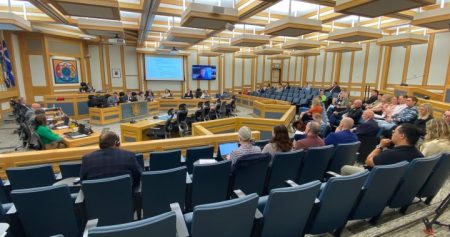The dawn of the New Year typically witnesses a surge in resolutions, with many eager to embrace healthier lifestyles. However, millions of Californians have been advised to postpone their fitness ambitions, particularly outdoor exercises, on New Year’s Day due to a critical air quality warning. A confluence of factors, including the lingering effects of recent storms and stagnant atmospheric conditions, has led to elevated levels of fine particulate matter, posing significant health risks. This cautionary advisory underscores the importance of prioritizing public health amidst challenging environmental circumstances.
California’s recent bout with severe weather, marked by heavy rainfall, flooding, and even a rare tornado warning for San Francisco, has significantly impacted air quality. The saturated ground and lingering moisture, combined with cooler temperatures and limited air circulation, have created an environment conducive to the accumulation of fine particulate matter, also known as PM-2.5. These microscopic particles, often invisible to the naked eye, can penetrate deep into the lungs and pose serious health threats, especially to vulnerable populations like children, the elderly, and those with pre-existing respiratory conditions.
The South Coast Air Quality Management District (AQMD) responded to these elevated pollution levels by issuing a mandatory “No-Burn” order for New Year’s Day, effectively prohibiting the use of wood-burning fireplaces and other similar devices across a wide swathe of Southern California. This measure aims to curtail the contribution of residential wood smoke to the already compromised air quality. The ban encompasses major population centers including Orange County and non-desert areas of Los Angeles, Riverside, and San Bernardino Counties. Exemptions are in place for higher-altitude communities and those reliant on wood burning for essential heating, acknowledging the diverse needs across the region.
This air quality warning extends beyond Southern California, impacting residents in Arizona’s Maricopa and Santa Cruz counties as well. The pervasive nature of this issue highlights the interconnectedness of air quality across geographical boundaries and emphasizes the need for regional cooperation in addressing such environmental challenges. Health officials in both states have issued similar recommendations, urging residents to minimize strenuous outdoor activities, keep windows and doors closed, and utilize air purifiers to mitigate exposure to harmful pollutants.
The primary concern revolves around PM-2.5, a particularly insidious air pollutant that can exacerbate existing heart and lung conditions. These microscopic particles, smaller than the width of a human hair, can bypass the body’s natural defenses and lodge deep within the respiratory system, triggering inflammation and other adverse health effects. Prolonged exposure to elevated PM-2.5 levels has been linked to a range of health issues, from aggravated asthma and bronchitis to increased risk of heart attacks and strokes. Therefore, limiting exposure, especially during periods of heightened pollution, is crucial for protecting public health.
Beyond personal precautions, the official guidance emphasizes broader community responsibility. The National Weather Service (NWS) has advised residents to consolidate travel, reduce or eliminate fireplace use, and avoid operating gas-powered lawn equipment. These collective actions, when adopted widely, can contribute significantly to improving air quality and mitigating the impact of pollution on vulnerable populations. The NWS further advises limiting extended or strenuous outdoor activities, keeping windows and doors closed, and using air conditioners or purifiers to maintain cleaner indoor air. These measures, coupled with individual choices to minimize unnecessary pollution sources, create a multi-pronged approach to safeguarding public health. The lingering dense fog advisory also adds a layer of complexity to the situation, further complicating driving conditions and underscoring the need for caution and vigilance on the roads.










